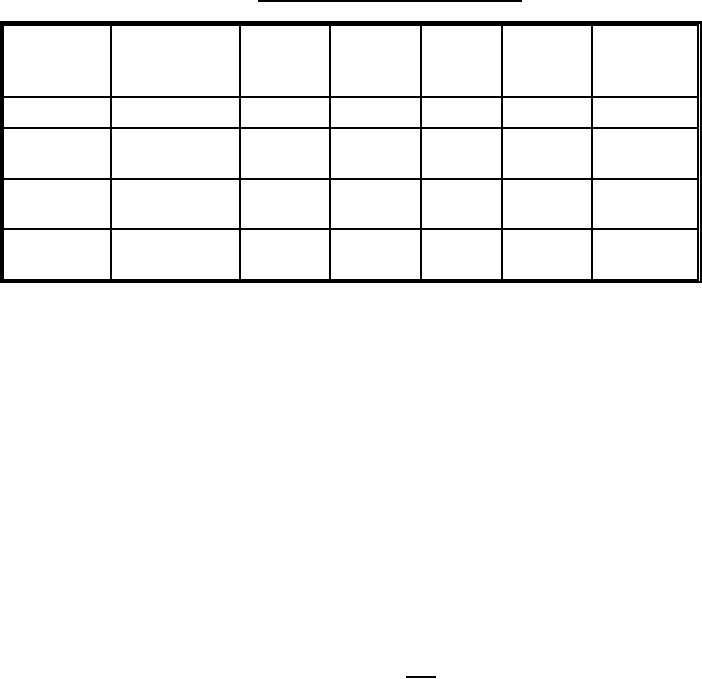
MIL-E-82756(OS)
TABLE II. Calculations for EC,MTN, and TEGDN.
Area1
Factor3
Component
Area
Adjusted
Relative
Relative
Area2
Measurement
Weight
Percentages
4
(10 ppm scale)1
Resorcinol
6.4 to 6.7
0.22
0.22
-
-
-
EC
6.8 to 7.4
1.06-(0.3
1.00
26.80
26.80
4.18
x Res)
TEGDN
3.6 to 4.0
2.20-(0.4
1.80
30.00
54.00
8.43
x EC)
MTN
0.9 to 1.4
7.18-(0.1
6.58
85.00
559.30
87.37
x EC)
1
Area measurements are typical examples, not limits or requirements.
2
When there is an overlapping of peaks as in the case of EC with TEGDN and MTN, the area attributed
to EC must be subtracted from the area of TEGDN and MTN, respectively.
3
The multiplication factor is based on the area-per-unit-proton technique. The factor is a result of
dividing the molecular weight of the components by the number of protons causing the spectral
configuration used for the analysis.
4
The relative percentages are used to calculate the actual percentages in the plasticizer once the
resorcinol percentage is known.
4.6.1.6 Aluminum. Dry thimble and residue from the ethanol extraction above (4.6.1.5) at 105·C for
1 hour, and determine weight of residue (see 4.6.1.7). Place in a 250-mL beaker, and add 100 mL of
dimethyl formamide. (NOTE: Since dimethyl formamide is somewhat toxic, this filtration should be
performed in a hood.) Heat on a steam bath until all solids except the aluminum go into solution. Filter
through a tared medium porosity filtering crucible. Wash the aluminum residue with dimethyl formamide,
then with alcohol. Dry crucible and aluminum at l05·C for 2 hours and weigh.
ΑΧ
Ξ 100
Περχενταγ ε οφ αλ µ ινυµ
υ
Ω
where:
A = Weight of crucible and aluminum in grams
C = Weight of tared crucible in grams
W = Weight of sample from 4.6.1.1 in grams
4.6.1.7 Nitrocellulose. Calculate the percentage of nitrocellulose in dried residue from ethanol
9
For Parts Inquires submit RFQ to Parts Hangar, Inc.
© Copyright 2015 Integrated Publishing, Inc.
A Service Disabled Veteran Owned Small Business